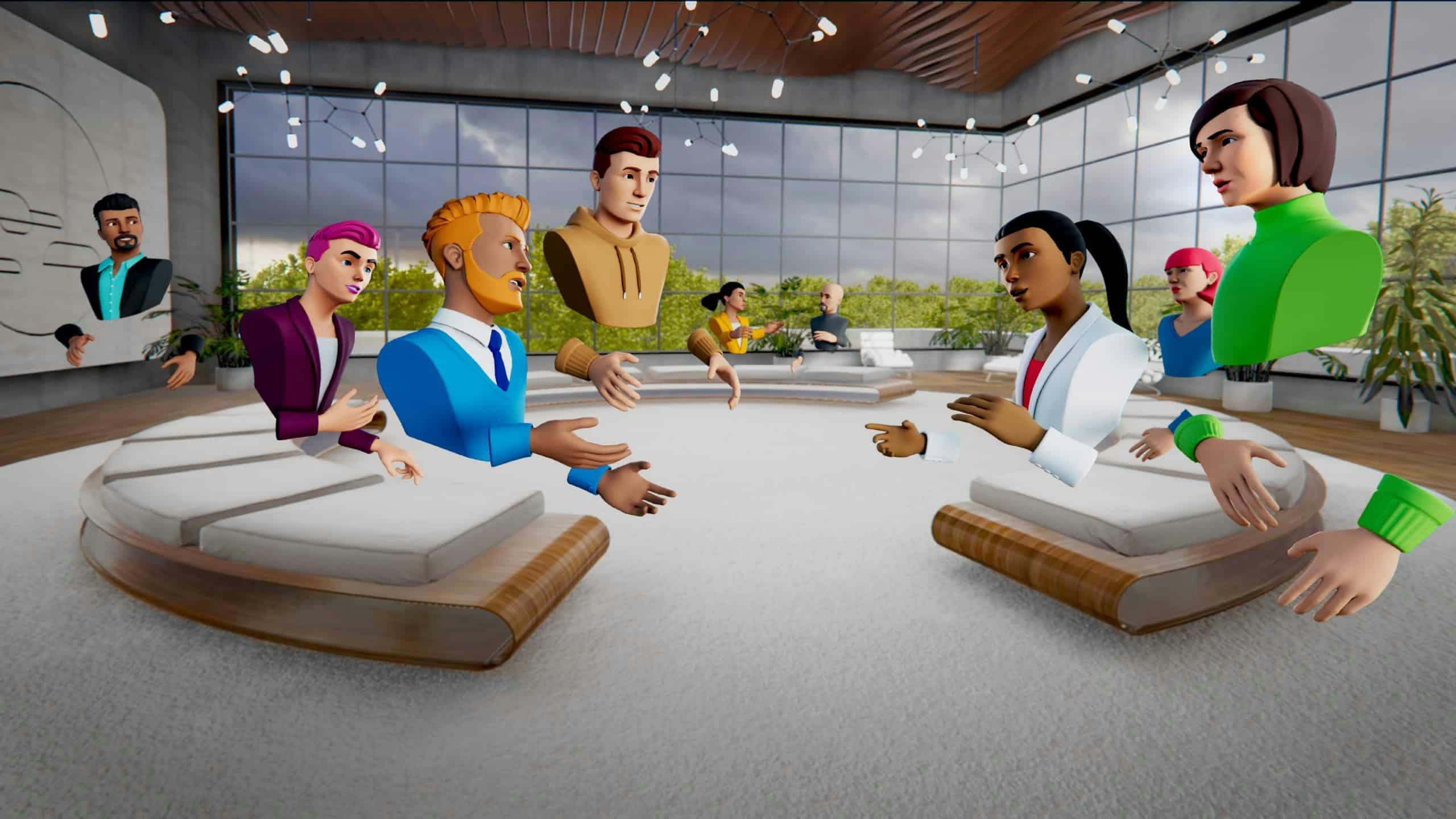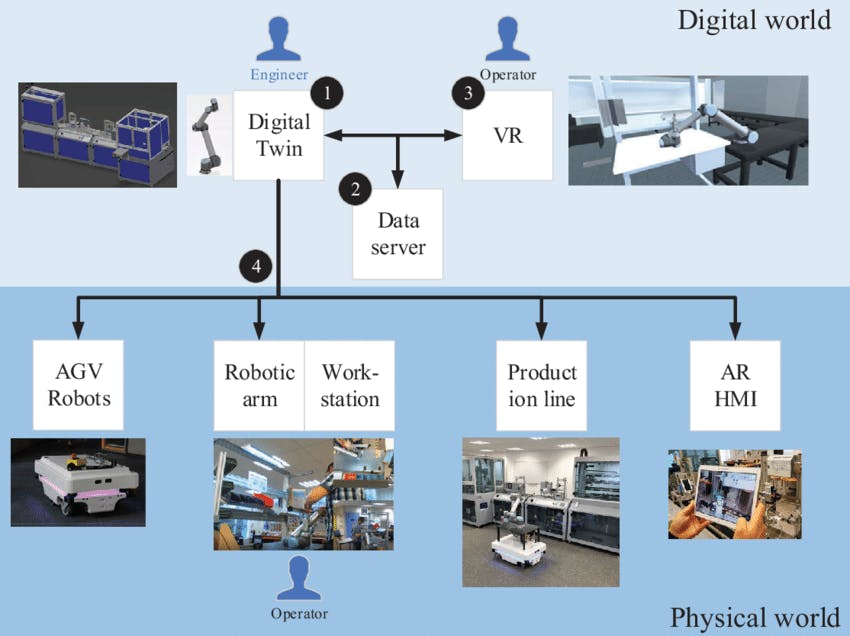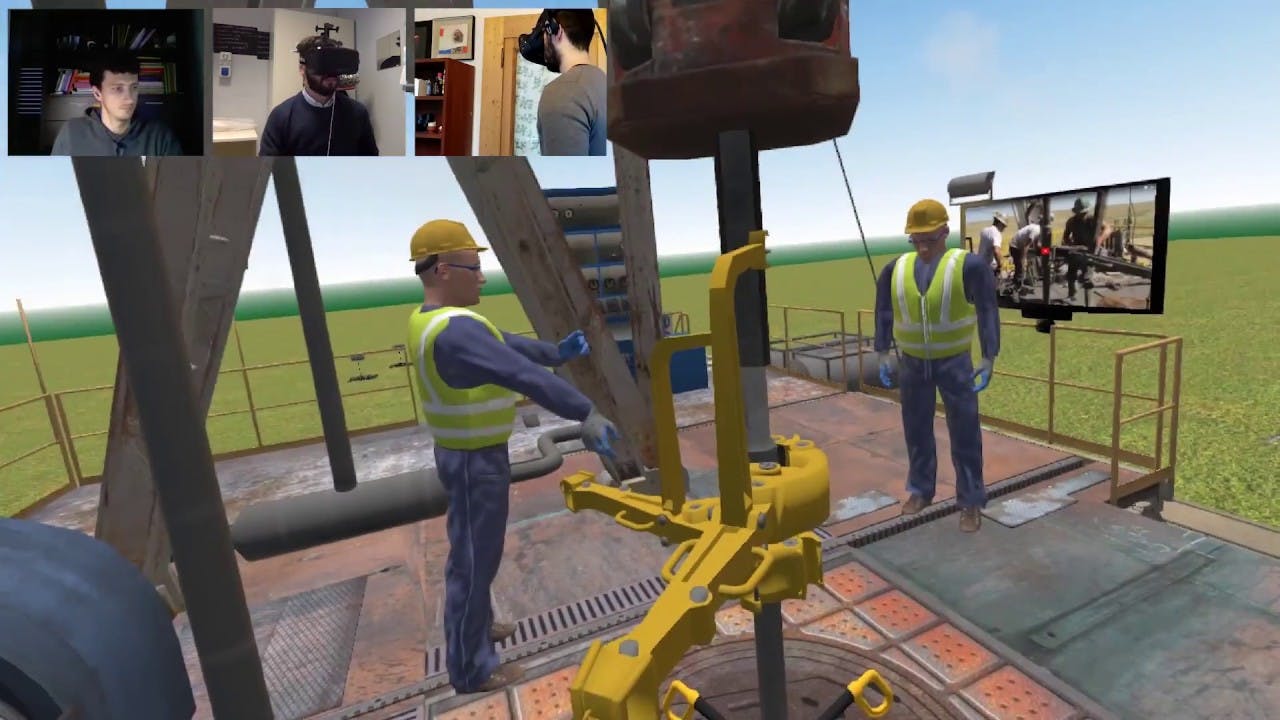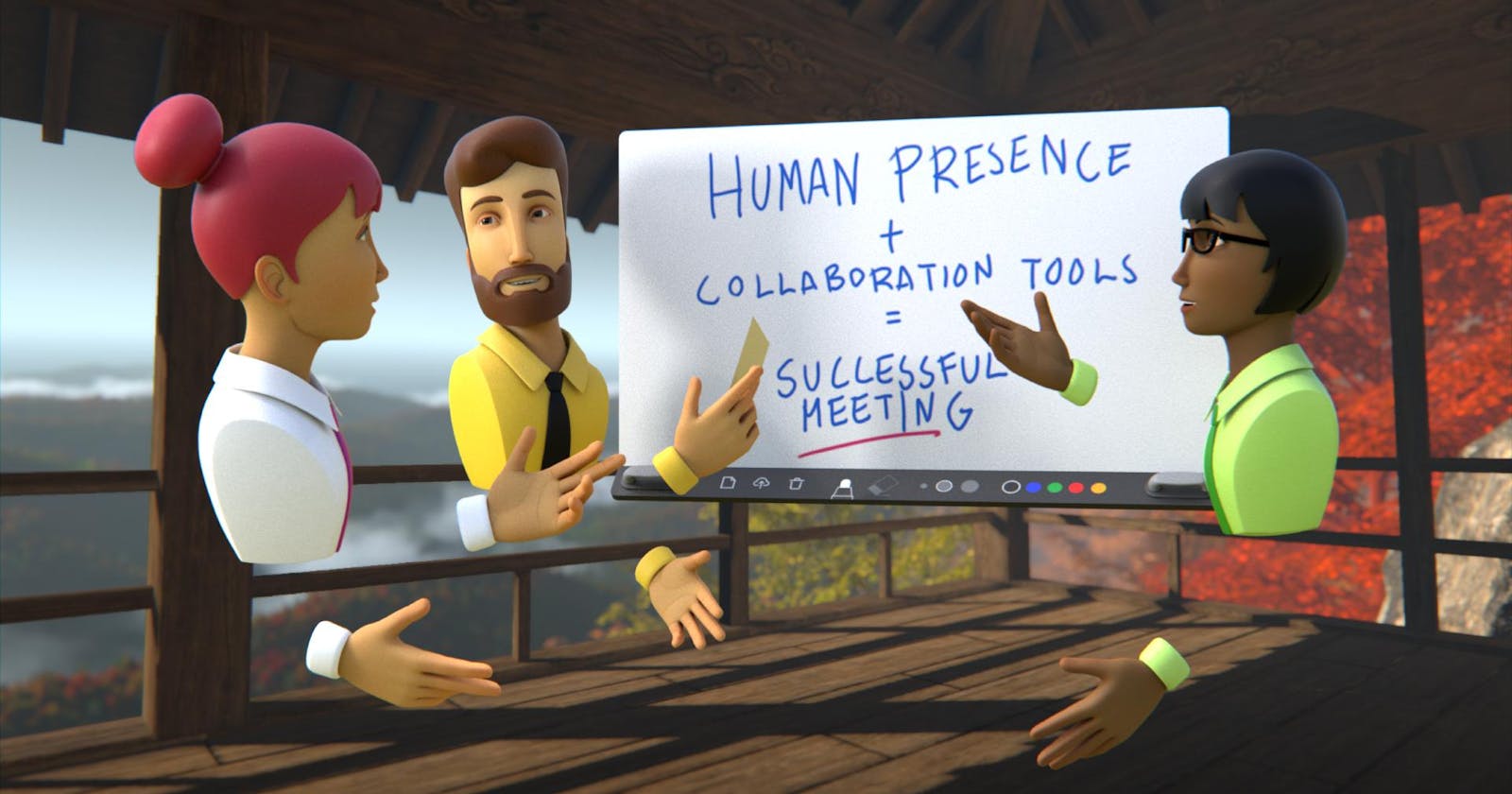Collaborative Workspace in VR
A Co-Simulation Work Environment for Design and Assessment of Industrial Workstations
Introduction
To understand collaborative workspace in VR, let's first see what it is,
1. Collaborative Workspace in VR
Virtual Reality Collaboration VR Platform allows users to collaborate in virtual reality from remote locations. This allows users to meet up in the same virtual space as avatars and communicate through text, speech, interactive drawing on a whiteboard, 3D Modelling, collaborative learning applications, controlling the digital twin of the actual remote machinery, etc.
2. Importance of Collaborative Workspaces in Modern Work Environment
Collaborative workspaces provide a platform for employees to easily communicate and collaborate regardless of their location.
This is especially important for remote teams or teams with members located in different geographic regions. It reduces office space and travel and provides a platform for employees to share ideas and collaborate, companies can foster creativity and innovation.
Benefits of collaborative workspace in VR
Improved communication and collaboration
Cost savings on office space and travel
Ability to work with geographically dispersed teams
Increased productivity and efficiency
Features and Use Cases of Collaborative Workspace
Virtual meeting rooms and collaborative spaces
Virtual meeting rooms and collaborative spaces allow employees to meet and work together regardless of their physical location. They can draw on a whiteboard interact with 3D Models, share files, and discuss and collaborate in a more fun and interactive way.

The meeting layout and theme can be customized accordingly as well. VR meeting rooms improve focus, reduce distraction, and lead to increased productivity.
Below given is a youtube video of such a use case,
Collaborative VR X Digital Twin
Digital twin control in VR collaborative workspace refers to the use of virtual reality technology to create a shared environment where multiple users can interact with a digital twin model in real-time.
Several solution providers are working on collaborative workspaces where multiple users can join a single session and they can collaborate & control the digital twin of actual machinery in a remote factory setup,

This helps the team monitor the health, and control the manufacturing batch or the machinery remotely and with ease, thus reducing the cost of travel and time. In real time, users can control the digital twin model, manipulate its parameters, and visualize results.
This allows for more efficient collaboration because users can communicate and make decisions based on a shared understanding.
Here are some steps you can take to implement digital twin control in a VR collaborative workspace:
Create a digital twin model of the asset or system you want to control.
Choose a VR platform that supports real-time collaboration and digital twin control.
Set up the VR environment and invite users to join the workspace.
Provide users with VR headsets and motion controllers, and ensure they are properly trained to use them.
Define the controls and parameters that users can manipulate in the digital twin model.
Implement feedback mechanisms that allow users to see the results of their actions in real-time.
Facilitate communication between users to ensure everyone has a shared understanding of the model and its behavior.
By implementing digital twin control in a VR collaborative workspace, you can improve the efficiency and effectiveness of your design, testing, and maintenance processes, and facilitate more effective collaboration among team members.
Collaborative VR in Learning and Education
VR collaborative learning refers to the use of virtual reality technology to create immersive learning environments that enable multiple learners to interact collaboratively.

This can be a Technical sop operation on handling complex functions on machinery, HSE base sop, technical and maintenance excellence, etc.
Simulations and Experiments: VR can be used to simulate experiments and procedures that are too dangerous or expensive to conduct in real life. This allows trainees/ employees to gain hands-on experience and practice skills in a safe and controlled environment.
Immersive Learning Environments: VR can create immersive learning environments that enable trainees/employees to experience and interact with complex concepts and theories in a more engaging and memorable way.
Conclusion
Overall the digital twin x VR collaborative workspace, Collaborative L&D is something that I would bet my money on. Controlling physical machinery in the shop floor or manufacturing area remotely with API triggers and playing around with the 3D model, brainstorming innovative ideas. VR is a powerful tool that has the potential to transform the way we work, learn, and interact with others.
VR can create immersive and engaging experiences that are not possible with traditional technologies.
While VR technology is still relatively new and rapidly evolving, its potential for collaboration and innovation is immense. As VR technology continues to advance, we can expect to see even more exciting and transformative applications in a wide range of fields and industries.
How XR Labs can help you leverage Collaborative workspace?
XR Labs is an AR/VR with the motto of Taking the first step toward an immersive future. We help many industries embrace XR across verticals like Education, Tourism, EHS, Manufacturing, Marketing, etc. Our R&D consistently works on use cases that are proven to provide tangible benefits and ROI. You can advance your core business goals and keep yourself on the cutting edge of the competition
Talk to me and see if I can help you achieve your business objectives and goals!
Credits : Vincent Havard, Benoit Jeanne, Marc Lacomblez & David Baudry (2019) Digital twin and virtual reality: a co-simulation environment for design and assessment of industrial workstations, Production & Manufacturing Research, 7:1, 472-489, DOI: 10.1080/21693277.2019.1660283
link to this article: https://doi.org/10.1080/21693277.2019.1660283
Images: Meta Horizon Workrooms,


